
ペルー編9:セビチェリアAl Tope Pezとスルキージョ市場
English follows Japanese
セビチェリアとは
2023年2月18日、ペルー滞在5日目。前夜に「アストリッド・イ・ガストン」で最高峰のペルー料理に舌鼓を打ったので、今度はもっと庶民的なペルー料理を食べたくなった。そこでこの日はリマ市内スルキージョ地区にある庶民的な「セビチェリア」を2軒訪れることにした。
「セビチェリア」とはセビーチェを中心に様々なシーフードのメニューを扱うレストランを指す。基本的には屋台や簡易食堂などの庶民的な店が多いが、中には「アストリッド・イ・ガストン」系列の高級セビチェリアなどもある。

リマ最大の生鮮市場、スルキージョ市場へ
まずはリマ最大の生鮮市場とされるスルキージョ市場の散策からスタートだ。スルキージョ市場はNo.1とNo.2の2つに分かれていて、今回はお目当てのセビチェリアが入っているNo.2を目指した。
ミラフローレス地区の宿からタクシーに乗り、ホセ・パルド通りを東に約1km、市内を南北に貫く共和国大通りに当たったら、そこを左折、北に1kmほど進んだ所がスルキージョ市場のNo.2だ。
市場の入口周辺は平日の午前中にもかかわらず、たくさんの買い物客が行き来していた。半野外の市場街に入ると、小さな店が細い路地沿いに格子状に連なっている。ちょうど東京のアメ横商店街のような感じだ。イキトスで訪れたベレン市場の混沌ぶりと比べると、だいぶ整理されていて、何より清潔だ。
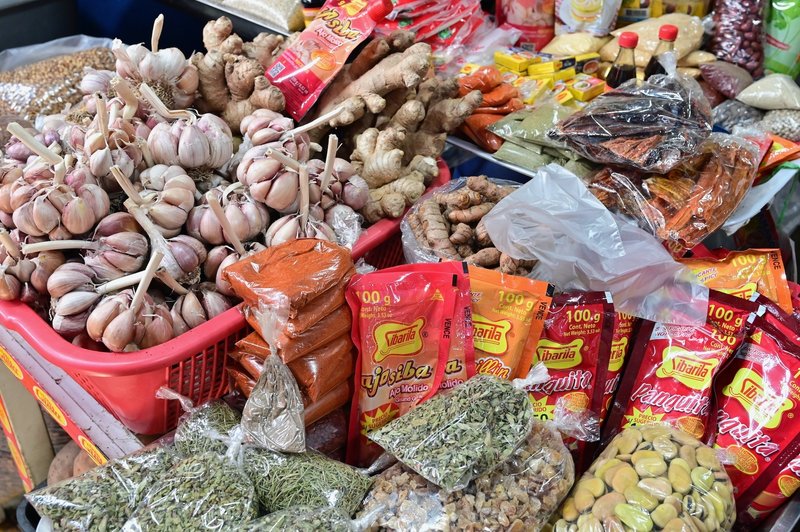
最初に目についたのは乾物屋。乾燥させた唐辛子のアヒ・アマリージョやアヒ・リモ、ニンニクや生姜、清涼飲料水のチチャモラーダに使う紫トウモロコシ、ドライハーブ類やチリパウダーなどが所狭しと狭い店頭に並んでいる。ペルーらしいものでは、乾燥させてダイス状につぶしたジャガイモも大きな頭陀袋のまま店頭に並んでいた。
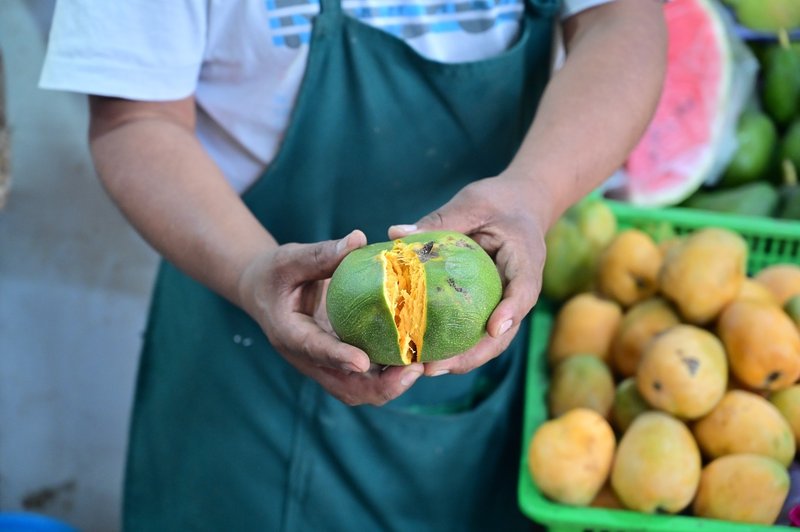
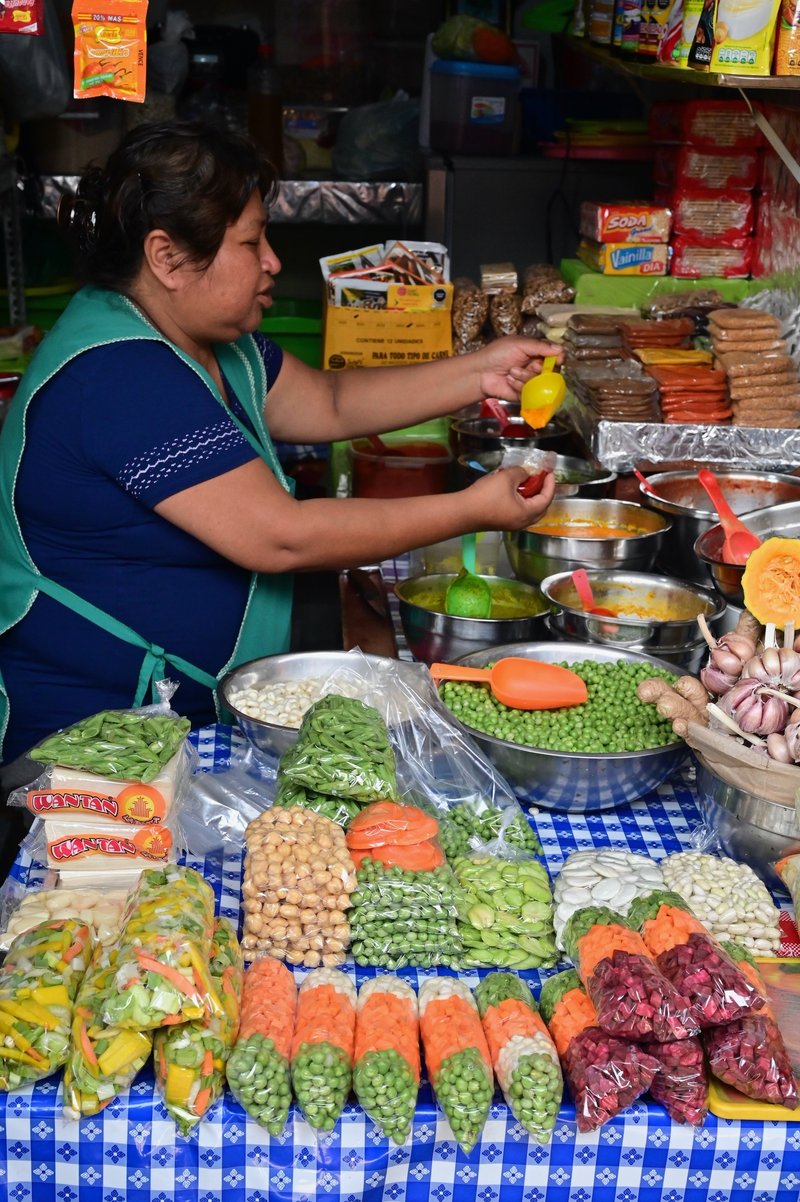
食品メーカー製のチリソースのビニールパックが並ぶ店もあれば、ガラス容器の中に赤、緑、茶、黄、オレンジ色などの自家製のチリソースが並ぶ店もある。ひよこ豆やグリーンピース、そら豆などは、料理一回分の量を小袋に分けたものが並んでいる。キヌアやお米、豆、トウモロコシ、その他の雑穀など穀物豆類専門店もペルーらしい。八百屋ではジャガイモの種類の多さに驚いた。紫色、黄色、赤、オレンジ、黒、灰色などカラフルなジャガイモが大中小様々なサイズや形状で揃っている。そのほかトロピカルフルーツばかりのフルーツ店、チーズ専門店などなどなど……さすが日本の3.4倍の広さの国土を持つペルー。初めて見る食材や使い方もわからないような食材も多い。

僕が一番見たかったのは魚屋。イキトスのベレン市場ではピラルクや大型ナマズや甲冑魚など淡水魚ばかりだったが、さすがにリマの魚屋は海の魚が中心で、種類も豊富だ。長さ50cmほどの巨大なフィレはシイラやイシモチ、メロなど。一尾まるごとなのはボラ、サバ、ハタ、マス、カレイなど、川魚のティラピアも混じっている。シーフードは牡蠣、帆立貝、ザルガイ、淡水性の手長エビ、日本のワタリガニに似た蟹も並んでいた。

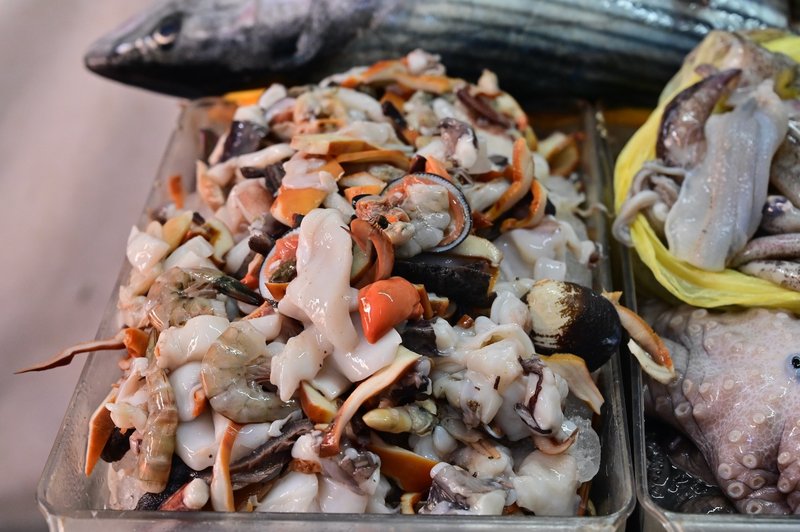
市場のセビチェリアで飲むチルカノ
食材を一通り観察した後、市場内の人気セビチェリア「Cevicheria Gladys Zavala(セビチェリア・グラディス・サヴァラ)」へ向かった。午前11時前にもかかわらず既に満席だったため、5分ほど待って市場の通路にはみ出した席に座ることが出来た。


壁に掲げたメニューは十数種類で、セビーチェはペスカード(魚)とミックスト(魚+シーフード入り)の2種類だけ。その他には魚の細切りのフライのチチャロンや、魚の蒸し煮のスダード、海鮮ご飯のアロス・コン・マリスコスなどがある。僕たちはセビーチェ・ミックストを一皿とチルカノというスープを人数分頼んだ。
チルカノは魚のアラや骨、唐辛子、ニンニクや香味野菜、レモン汁と共に取った熱いダシ汁にセビーチェ用にマリネした魚のぶつ切りを少々加えたもの。要はセビーチェ味のアラ汁だ。値段はたったの6ソル(当時のレートで210円)だが、魚の出汁の中に酸っぱさと辛さが溶け込んでいて、これが実に美味い! トルコのイシュケンベ・チョルバス(羊の胃腸のスープ)やポーランドのジュレック(発酵ライ麦のスープ)に匹敵するようなローカルな汁物だ。
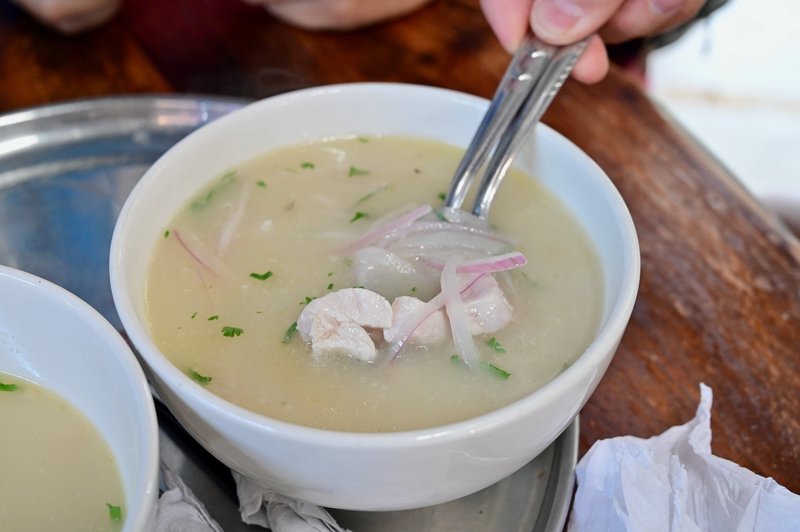
ペルー料理、特にセビーチェは生の魚介、生の唐辛子とにんにく、レモン汁、更にうま味調味料までたっぷり使うため胃腸への刺激が強く、5日間食べ続けた僕は胃腸の調子が早くも悪くなり始めていた。更に前夜は調子にのってアルコールの強いピスコサワーまで飲みすぎていた。そんな朝にチルカノが五臓六腑に沁みた。美味い!これは癖になる!
ゴクゴクと飲み干してしまい、お代わりを頼みたくなったが、待て待て、この後、もう一軒のセビチェリアが控えているのだ。
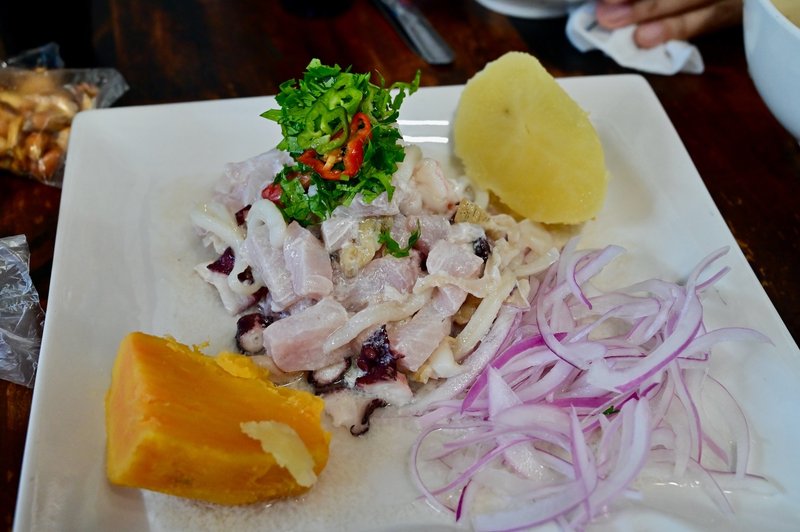
日系人シェフ、トシさんの店「Al Toke Pez」
腹ごなしのため市場をもう一周回った後、市場の南側に出て通りを渡ると、目の前に目指していた二軒目のセビチェリア「Al Toke Pez(アル・トケ・ペス)」があった。ここは日系人シェフのトシ・マツフジさんの店で、Netflixの料理ドキュメンタリー「ストリート・グルメを求めて:ラテンアメリカ」のペルー編で取り上げられ、世界的に有名になった。開店10分前、お店のシャッターはまだ閉まっていたが、既に4人のお客さんが並んでいた。

正午きっちりにシャッターが上がり、20㎡ほどの小さなお店に足を踏み入れた。お店の3/4がオープンキッチンになっていて、忙しそうに動き回るスタッフが4人。コロナ禍中だったので、全員しっかりマスクをしていたが、奥にトシさんの顔も見える。そのキッチンの左側と手前側がL字形のカウンターになっていて、背の高いカウンターチェアーが8脚並ぶ。一度に入れるお客さんはたったの8人だけ。
先客の4人が左側に腰掛けたので、僕たち4人は真正面側に陣取った。すると目の前でシェフがアロス・コン・マリスコスのフライパンを何度もフランベし、大きな炎がボワ~っと上がった。そのせいか店内は超暑い。
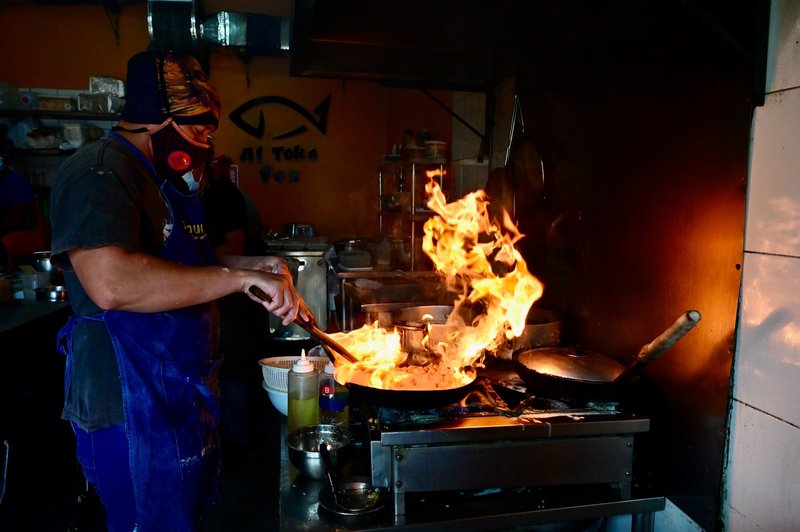
レチェ・デ・ティグレ、タイガーミルク
このお店の名物はコンビナードと呼ばれる定食だ。セビーチェとチチャロンとアロス・コン・マリスコスの3つの料理を一皿に盛り合わせて、お値段は25ソル(当時のレートで875円)と、屋台と比べても格安。僕たちはコンビナードに加えて8ソル(280円)のレチェ・デ・ティグレを頼んだ。
前回も書いたが、レチェ・デ・ティグレは英語でタイガーミルク、日本語では虎の乳と訳される。セビーチェを作る際に余った魚のアラを玉ねぎやレモンや唐辛子などでマリネした後、ミキサーにかけて濾した液体を指す。主にセビーチェやティラディートの味付けに用いられるが、このお店のように単体で出されることもあるようだ。
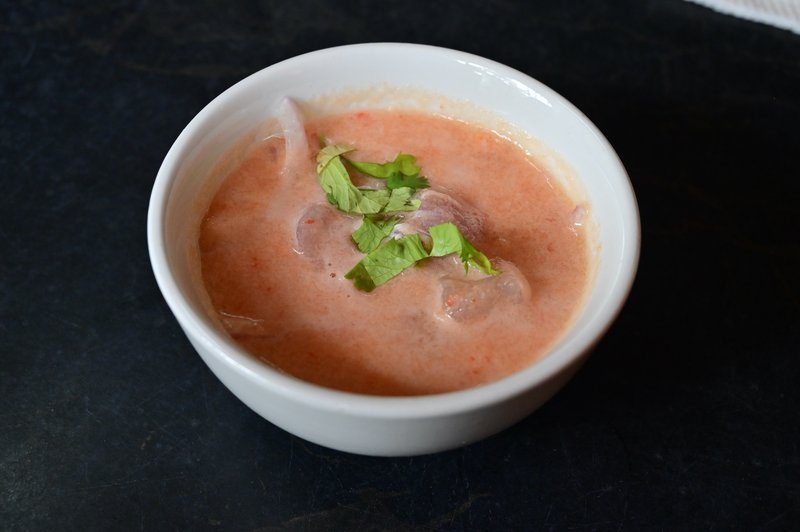
レチェ・デ・ティグレは中国茶を飲むような小さな茶碗で供された。乳化したオレンジ色の冷たいスープに生の白身魚の薄切りが浮かんでいて、香菜が散らしてある。スープには魚の旨味がしっかり溶け込んでいて、これは液体版セビーチェと言えるな。オレンジ色は唐辛子アヒ・リモから来ているのだろう、後味がかなり辛い。
定食、コンビナード
そしてコンビナードは横40cm、奥行き15cmほどの長方形のお皿に、セビーチェ・ミックスト、チチャロン、海鮮ご飯が山盛りで、普通の日本人なら軽く2人分の量がある。食べ切れるかなあ?
セビーチェ・ミックストは白身魚のほか、海老、烏賊、紫玉ねぎを先ほどのオレンジ色のレチェ・デ・ティグレで和え、乾燥ジャイアントコーンや茹でた白トウモロコシのチョクロ、甘く煮たサツマイモをたっぷり添えてある。一皿で酸っぱさ、辛さだけでなく、甘さも味わえ、更に生魚、茹で海老と烏賊、乾燥ジャイアントコーンなどの異なった食感も楽しめる。美味い! 一つ一つの食材はシンプルだが、組み合わせの妙だ。通常セビーチェの魚はぶつ切りにされているが、さすが日系人シェフの料理らしく、刺身のような薄切りなのも食感的に嬉しい。
真ん中のチチャロンはニンニクが効いた小麦粉の衣を付けた烏賊と海老のフライ。衣がカリっと揚がっていて、マヨネーズを付けて食べると、日本の鶏唐に通じるジャンクさ。レチェ・デ・ティグレを付けて味変するのも良い。

海鮮ご飯のアロス・コン・マリスコス
そして、シェフが大きなフライパンでフランベしていたアロス・コン・マリスコス。海老、烏賊、アサリ、トマト、香菜、アヒ・アマリージョで炊いた海鮮ご飯で、フライパンで作るが、汁気があるので炒飯というより、パエリアに近い。ペルーらしい海鮮の出汁が沁みたお米、フランベによる焦げた香りもしっかり付いている。これは美味いなあ! 量が多すぎて食べきれないけど、いつまでも食べ続けていたい。これは「貧者のパエリア」とでも呼ぼうか? コンビナードは3種の海鮮料理がたっぷり存分に楽しめて大満足だ。
最高のストリートフード満喫!
ザ・ハーブズメンの今回のペルー食い倒れ旅は、世界最先端のファインダイニングから始まり、アマゾンでワイルドな地元料理の数々を堪能し、リマに戻ったその足でペルー料理最高峰の豪華レストランと、かなり極端なペルー料理が続いていた。5日目にして、やっと地元仕様のストリートフードが最高に美味いお店を訪れることが出来た。
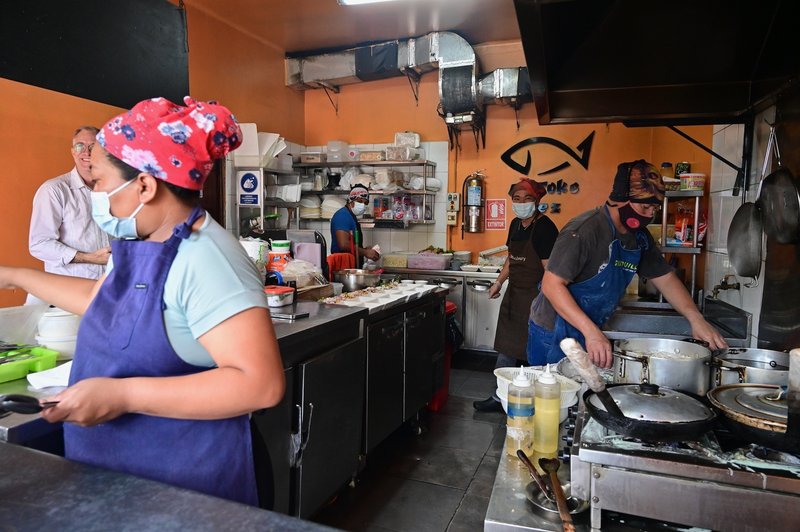
ネットフリックスのドキュメンタリーによると、トシさんは日系料理の有名シェフで、超高級レストランのオーナーだった亡父の意思を受け継ぎながらも、それを屋台に毛の生えたような小さなお店でストリートフードとして表現するのが自分の生き方だと言っていた。アル・トケ・ペスのコンビナードは地元民から外国人旅行者まで愛される、まさに地域を代表するストリートフードだ。
アル・トケ・ペス、リマ滞在中にもう一度来たいなあ。食べ終えてお店を出ると、目の前の歩道に十数名が列を作って待っていた。当然でしょう!

Peru 9: Cebicheria Al Toke Pez & Sulquillo Market
Cebicheria?
On February 18, 2023, our fifth day in Peru, after savoring the pinnacle of Peruvian cuisine at "Astrid & Gastón" the night before, we craved a taste of more down-to-earth Peruvian fare. So, we decided to visit two local "cevicherías" in the Surquillo district of Lima. A "cevichería" specializes in ceviche and offers a variety of seafood dishes, ranging from casual street food stalls to upscale establishments like those under the "Astrid & Gastón" umbrella.

Surquillo Market, the largest fresh market in Lima
We started the day with a stroll through Surquillo Market, the largest fresh market in Lima, which is divided into No.1 and No.2 sections. Our destination was the No.2 section, housing the cevicherías we sought. From our lodging in the Miraflores district, we took a taxi along José Pardo Avenue, turned left onto Republica Avenue, and proceeded about 1km north to reach Surquillo Market No.2.
Despite it being a weekday morning, the market's entrance bustled with shoppers. The semi-outdoor market resembled Tokyo's Ameyoko shopping street, with small shops arranged in a grid along narrow alleys. Compared to the chaotic atmosphere of Belén Market in Iquitos, Surquillo Market was notably organized and clean.

The first thing that caught my eye was a dry goods store. It was cramped with dried chili peppers like aji amarillo and aji limo, garlic, ginger, purple corn for making chicha morada, dried herbs, and chili powders tightly packed. There were also dried, diced potatoes displayed in large burlap sacks.
Some shops lined up plastic packs of commercially produced chili sauce, while others showcased homemade chili sauces in red, green, brown, yellow, and orange hues in glass containers. Chickpeas, green peas, and fava beans were portioned into small bags, enough for one meal. Specialty stores for grains and legumes offered quinoa, rice, beans, corn, and other cereals, highlighting Peru's rich agricultural diversity.
The variety of potatoes at the vegetable stands was astonishing: purple, yellow, red, orange, black, gray, and more, in all sizes and shapes. There were also fruit stores filled with tropical fruits, cheese specialty shops, and much more... Truly indicative of Peru's land area, which is 3.4 times larger than Japan's. Many ingredients were new to me, and some were even unfamiliar in their use.
What I most wanted to see was the fishmonger. At Iquitos' Belen Market, it was mostly freshwater fish like pirarucu, large catfish, and armored catfish on display, but as expected, Lima's fishmongers focused on a wide variety of sea fish. Huge fillets nearly 50cm in length included swordfish, threadfin bream, and amberjack. Whole fish on offer included mullet, mackerel, grouper, bass, flounder, and even freshwater tilapia. The seafood section also had oysters, scallops, clams, freshwater prawns resembling long-armed shrimp, and crabs.
Chilcano in the Market
After exploring the market, we headed to "Cevicheria Gladys Zavala" for lunch. The place was already full, so we waited for a table to become available. The menu boasted a variety of seafood dishes, including ceviche de pescado (fish ceviche), ceviche mixto (mixed seafood ceviche), chicharrón de pescado (fried fish strips), sudado (fish stew), and arroz con mariscos (seafood rice). We ordered a mixto ceviche plate and several servings of chilcano, a hot broth made from fish scraps, chili, garlic, aromatic vegetables, and lemon juice—akin to a ceviche-flavored fish soup, priced at just 6 soles (approximately $1.75).
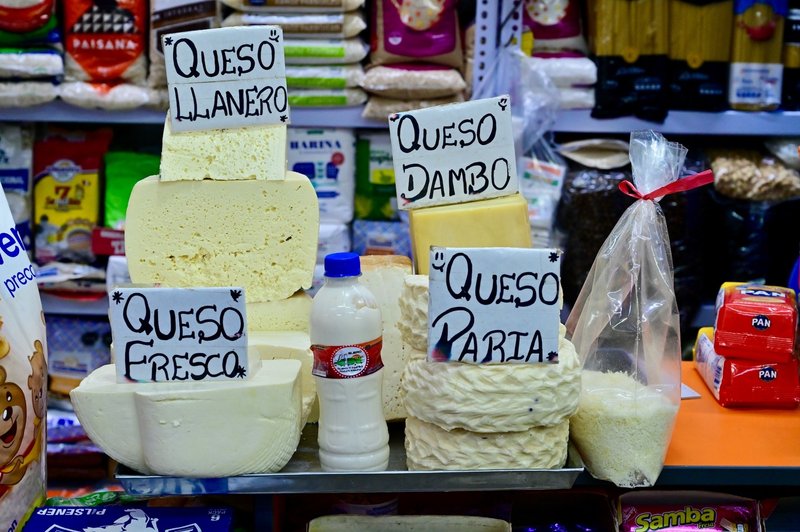
Nikkei Chef Toshi's Al Tope Pez
After walking around the market for a bit to digest, we exited on the south side and crossed the street to find the second cevichería we were aiming for, "Al Toke Pez." This place is owned by Japanese-Peruvian chef Toshi Matsufuji and became globally famous after being featured in the Netflix culinary documentary "Street Food: Latin America" in the Peru episode. Ten minutes before opening, the shop's shutter was still down, but there were already four customers in line.
Right at noon, the shutter went up, and we stepped into the small, 20-square-meter shop. Three-quarters of the space was an open kitchen, bustling with four busy staff members. Despite being in the middle of the COVID-19 pandemic, all were properly masked, and we could see Toshi's face in the back. The kitchen's left and front sides formed an L-shaped counter with eight high counter chairs lined up. The shop could only accommodate eight customers at a time.
As the previous four customers took their seats on the left, we four took our places directly in front. Suddenly, the chef began flambeing pans of arroz con mariscos repeatedly, sending large flames shooting up, making the interior incredibly hot.
The shop's specialty is the "combinado," a set meal consisting of ceviche, chicharrón, and arroz con mariscos on one plate, all for an affordable price of 25 soles , a bargain even compared to street stalls. In addition to the combinado, we also ordered leche de tigre for 8 soles.
Leche de Tigre, Tiger Milk
As mentioned before, leche de tigre, or "tiger's milk" in English and "虎の乳" in Japanese, refers to the liquid left after marinating fish scraps with onions, lemon, and chili, then blended and strained. Primarily used for seasoning ceviche and tiradito, it's also served on its own at places like this one.
Served in a small cup similar to those used for Chinese tea, the leche de tigre was a chilled, emulsified orange soup with thin slices of raw white fish floating atop, sprinkled with cilantro. The soup was rich in the umami of fish, making it akin to a liquid version of ceviche. The orange color likely came from the aji limo chili, giving it a notably spicy aftertaste.
Combinado, Combination meals
The combinado, served on a 40cm by 15cm rectangular plate, was heaped with mixed ceviche, chicharrón, and seafood rice – a generous serving that would easily feed two average Japanese people. The mixed ceviche included white fish, shrimp, squid, and purple onion marinated in the same orange leche de tigre, garnished abundantly with dried giant corn, boiled white corn choclo, and sweetly stewed sweet potato. This one dish provided a myriad of flavors and textures, from sour to spicy to sweet, along with the varying textures of raw fish, boiled shrimp and squid, and dried giant corn. Delicious! Though simple ingredients, the combination was exquisite. Unlike the typical chunky cut of fish in ceviche, this dish featured thinly sliced fish, a texture delight characteristic of a Japanese chef's cuisine.
The chicharrón in the middle was fried squid and shrimp in a garlic-flavored wheat flour batter. The crispy batter, dipped in mayonnaise, echoed the junk food appeal of Japanese chicken karaage, with the option to add leche de tigre for a flavor twist.
Arroz con mariscos
And the chef's flambeed arroz con mariscos was a seafood rice cooked with shrimp, squid, clams, tomatoes, cilantro, and aji amarillo. Prepared in a pan yet moist like paella, the rice absorbed the essence of Peruvian seafood, enhanced by the charred aroma from the flambe. It was irresistibly delicious, despite being too much to finish. Could this be called "Poorman's paella"? The combinado offered an ample and thoroughly satisfying taste of three kinds of seafood dishes.
Real street food, finally!
Our culinary journey in Peru started from cutting-edge fine dining to wild local cuisine in the Amazon, and then to Lima's top-notch luxury restaurants. These selection was so extreme and unusual. Then finally we arrived a place where local-style street food was at its finest.
According to the Netflix documentary, Chef Toshi, the son of a high-end Nikkei restaurant owner & a legendary chef of Nikkei cuisine, chose to express his culinary heritage through a tiny street food shop, representing his way of life. "Al Toke Pez's" combinado is beloved by locals and tourists alike, truly a flagship street food of the region.
I would love to visit "Al Toke Pez" again during my stay in Lima. As we left the shop, we saw a line of about a dozen people waiting on the sidewalk. Naturally!
この記事が気に入ったらサポートをしてみませんか?
